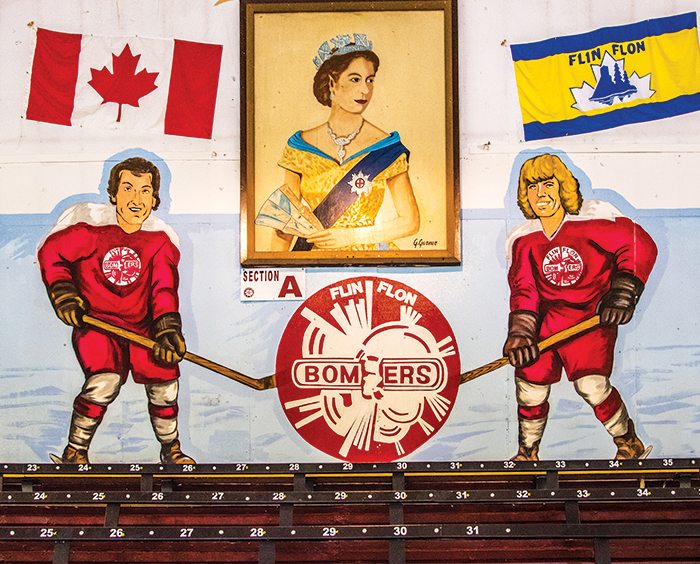Many things set Flin Flon apart from other northern towns: jagged rocky outcroppings; a world-class choir; flies the size of birds. And, as many a Flin Flonner likes to brag, it’s the only city in the world named after a character from a dime-store science-fiction novel.
It’s also become the unofficial supplier of hockey greats: At least 17 NHL players have come out of the town (population 5,500), including Ken Baumgartner, Reggie Leach, Gerry Hart and the “Toothless Wonder” himself, Bobby Clarke.
Located 740 kilometres northwest of Winnipeg, Flin Flon rests on the edge of the Canadian Shield, surrounded by cliffs and with a lake smack dab in its centre. It’s a city of incredible but challenging landscapes. On a recent hiking trip with Winnipeg-based Prairie Pathfinders, I discovered so much more about this quirky mining outpost that I returned home firmly believing Flin Flon is the coolest small town in Canada.
My hiking group arrives one early afternoon, just as the sun is washing over Flin Flon’s craggy greenstone ledges. Such natural beauty is in stark contrast to the 251-metre-high smokestack that defines Flin Flon’s skyline. But that decidedly unglamorous landmark is a reminder of the importance of mining here—and one that’s revered by locals, who lovingly refer to it as “The Stack.”
The town’s mining legacy began in 1914 with Flin Flon’s first prospector, Tom Creighton. According to legend, Creighton stumbled upon a tattered copy of a sci-fi novel while walking in a nearby forest. The Sunless City by J.E. Preston Muddock told the fantastic story of Josiah Flintabbatey Flonatin, who steered a submarine into a gold-coated tunnel and discovered a hidden civilization.
At the edge of that same forest, Creighton spotted residual thick veins of zinc, copper, silver and gold. In 1915, he claimed the mine and named it Flin Flon, after the hero of his found novel. Today, a 24-foot statue of Flintabbatey—dubbed “Flinty”—greets visitors as they enter the town from Highway 10. (The statue itself is another source of barroom trivia: It was designed in 1962 by cartoonist Al Capp of Li’l Abner fame.)

In the nostalgia-filled stories of local residents, I hear of summers around lakes and winters lit by the northern lights. But I also learn about an arts and entertainment scheme established by the still-operating Hudson Bay Mining & Smelting Company. Owned by the Whitneys, a family of wealthy American industrialists, the company set up affordable cultural diversions to keep Flin Flonners happy and living in the area to man the mine: ballet lessons for a dollar a year; cheap and plentiful ice time for hockey and figure skating.
Of course, life in Flin Flon wasn’t all pirouettes and slap shots. The town is built on nearly impenetrable bedrock, on ground that is frozen half the year. I marvel at one local innovation: Rows of raised wooden boxes that are used as sidewalks, to mask the city’s above-ground sewage system. The system was designed in the 1930s as an alternative to underground sewers. The handsome raised walkway resembles a modernist architecture feature—at first glance, you’d never guess the “dirty” secret it hides!
I set out on a sunset hike along Flin Flon’s lakeside path, a.k.a. Flinty’s Boardwalk. As I wind my way around Ross Lake, I stop to chat with locals out for an evening walk. Crystal Kolt, who moved here from Winnipeg some 20 years ago, is now director of the Flin Flon Arts Council. “To walk to work,” she says, “I stroll past a babbling brook, through a forest, up a cliff and past the lake. In the fall, I can even pick up blueberries along the way.”
There’s no shortage of natural wonders outside the city either. The Grass River canoe route—adaptable to novice or experienced canoers—boasts a series of falls and rapids, a suspension bridge, petroglyphs and an underground spring. During autumn months, red fruit-laden bushes blur into the colours of changing leaves for a spectacular painterly backdrop.

Fall is also the season for Culture Days, a Canada-wide festival with about 80 events in and around Flin Flon. Spectators can take in the area’s world-class arts scene with performances by the Ham Sandwich theatre group, offerings from the Northern Village Art Centre or concerts of classical and choral music.
As Kolt points out, the heritage of arts and sport combined with the mining industry has proven to be a valuable collaboration, establishing Flin Flon as a cultural hub. “Because we’re a mining community, we have a lot of educated and skilled people here. So when we’re mounting a play, we have a professional lift-rigger from the mine to help with sets. The choir, which has performed at Carnegie Hall, also belts out “O Canada” at local hockey games. We’re truly a one-stop shop in Flin Flon.”
GETTING THERE
On the Manitoba-Saskatchewan border, Flin Flon can be reached in about 10 hours by car from Edmonton. (The trip takes you through Lloydminster, Prince Albert and other scenic Prairie towns.) Upgrade to a Plus or higher membership for peace of mind while on the road: extended towing distances, free fuel and delivery, enhanced trip collision reimbursement and more.
